Menu
Most modern-day conveniences are often taken for granted without giving thought to the inspirations, sweat, blood, hours of toil that go into building these wonder gadgets before they evolve to their latest formats. Heating today has become as simple a process as flipping a switch, setting the temperature and enjoying the benefits of a warm, welcoming ambience. But things weren’t as easy for our forefathers who braved and battled winters with whatever was available to them. It has been a long journey of continuous human endeavour that has made heating so reliable and easily accessible to everyone.
BC
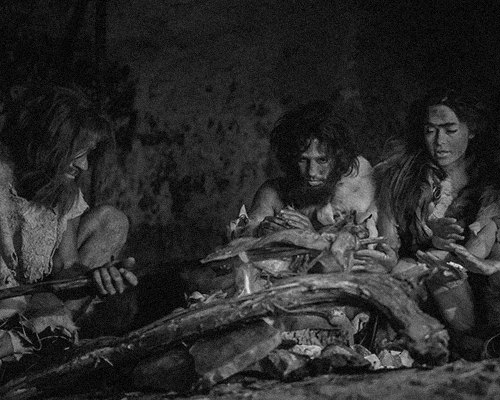
The earliest form of heating (about 1.5 million years ago) was a campfire, around which ancient humans gathered for warmth and cooking. The fire slowly moved indoors with a central fire and a central roof opening for smoke to escape.

Fixed central hearths date as far back as 2500 B.C. evidence of which was found in excavations in Greece. About a thousand years later the Egyptians introduced bellows to fan the flames and enhance the heat of fires, but central heating remained elusive until about a hundred BC and the rise of the Roman Empire.
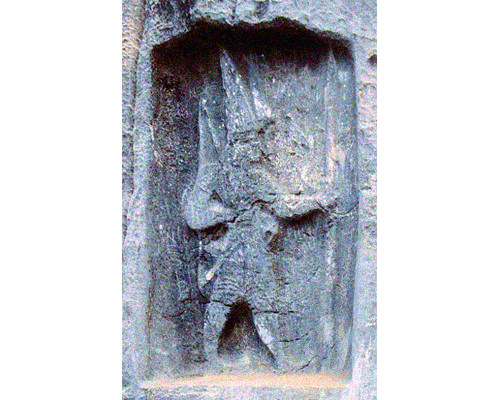
Historical data indicates that underfloor heating systems were first used in the Middle East. In 1300 B.C King Arzawa installed such a system in his palace at Beycesultan, Turkey.
Source: https://en.wikipedia.org/wiki/Arzawa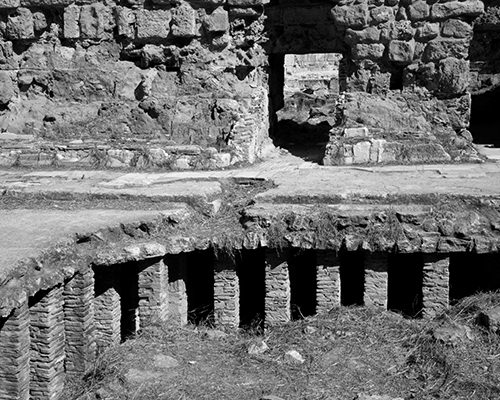
The Romans improved upon this idea and used heating on floors and walls as well, thereby creating the first central heating system ever. These systems used by the Romans were hollow spaces below stone floors called the hypocaust. These systems supported the floor on pillars over a chamber with a fire which was lit at one end. Combustion gases passed under the floor to the other side.
Newer systems used tile flues or hollow tile walls to conduct heated combustion products. The fire moved from one end to a separate furnace chamber. Later, the hypocaust chamber was eliminated completely and replaced by floor ducts that connected from the furnace to the wall flues. In ancient Rome, such hypocaust heating systems were used to heat upper-class Roman houses, and also for public baths, which were extremely popular among rich Romans.
A.D.
324
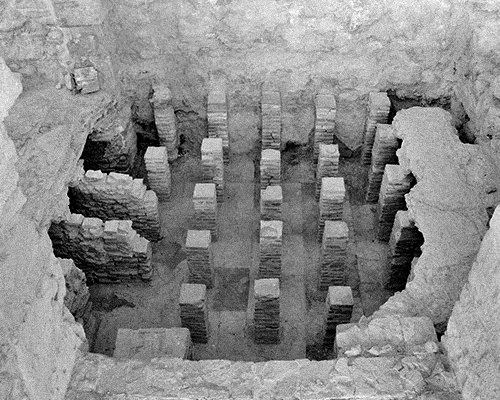
This was a period that saw the construction of at least 17 major public baths using hypocaust systems. The art and science of hypocaust systems were lost after the fall of the Roman Empire.
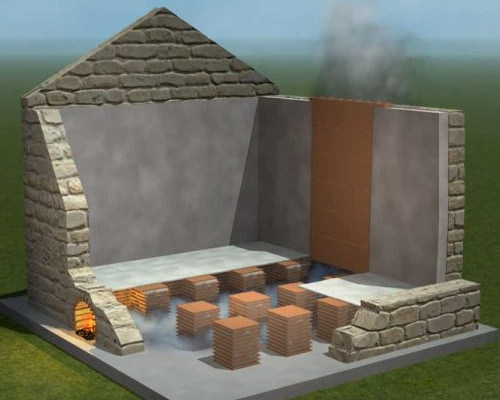
Warm-air heating is known to date back to the year 200; Emperor Heliogabalus had heating in his palace that used hot air.
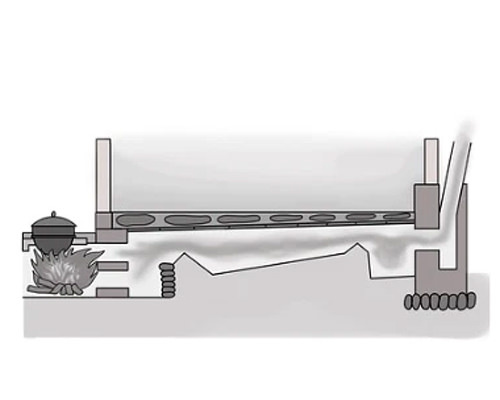
Western Heating science saw very little advances in the period of the Dark Ages. Across Europe, households went back to the more primitive fireplaces for almost a thousand years.
In the early medieval period, in Reichenau Abbey, a network of interconnected underfloor channels was used for heating the large assembly room of the monks in winter. The system proved to be quite effective.
Source: https://fr.hudsonreed.com/info/blog/histoire-complete-du-radiateur/Year
1200

In the 1200s the city hall in Luneberg, Germany had a central warm-air system that used three furnaces. A similar system was constructed around the same time at Marburg Castle in Germany.
Year
1202

A fine example of central heating using wood blasted furnaces is “The Royal Monastery” of Our Lady of the Wheel in Spain. In the 13th century, the Cistercian monks revived central heating in Europe using indoor furnaces.
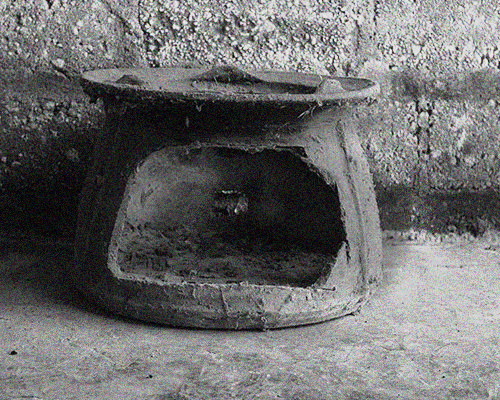
The invention of the Chimney marked the beginning of the modern heating era. Early chimneys were built to accommodate a chimney sweep to climb into them for cleaning. Stove heating soon advanced beyond the crude devices that were first used.
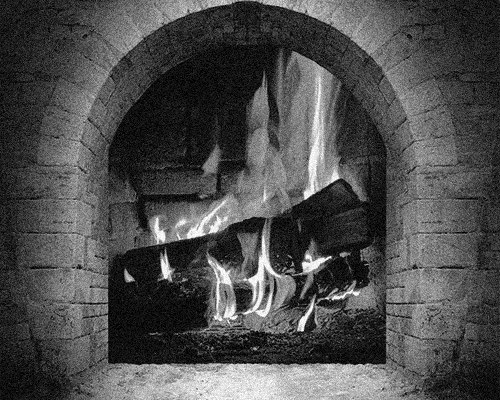
Castles built in the 13th century had fireplaces with a short flue to the outside, a precursor to a chimney. These fireplaces were constructed entirely of stone, and much later from cast iron firebacks designed to protect the stone from the heat of the fire. From fireplaces to stoves, wood was the primary source of raw material used to generate heat. And later there was a newly discovered material called Coal that took over.
Year
1300
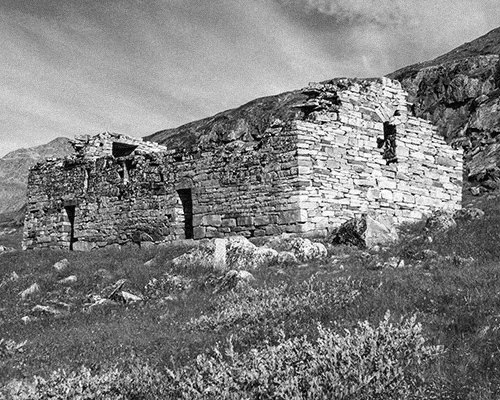
The earliest recorded use of hot water heating seems to be in the 14th century at a monastery in Greenland that used hot spring water.
Year
1500
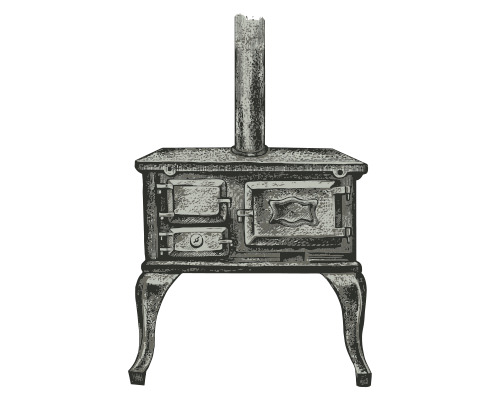
The earliest metal stoves made an appearance after 1400 and made of connected cast iron hearth firebacks.
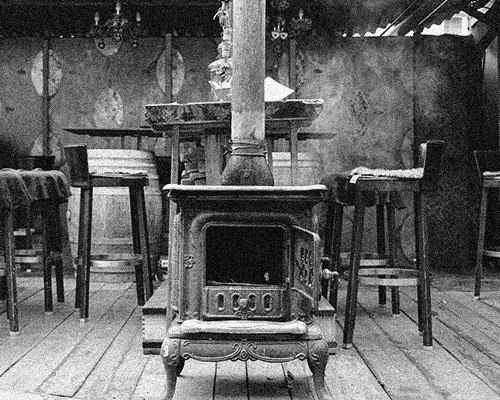
Stoves were built in the 17th century, but they could only heat one room at a time and fireplaces remained the primary form of heating against the bitter cold.
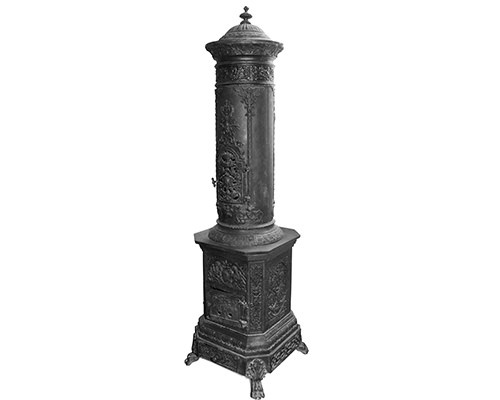
By this time, masonry stoves were commonly used in northern Europe during this period, which were large and went by the name of Russian or Swedish stoves.
Year
1594

In this year, an English writer Hugh Plat proposed a steam-based central heating system for a greenhouse. But this wasn’t followed up with any further work on this subject till the 18th century.
Source: https://en.wikipedia.org/wiki/Hugh_Plat#/media/File:Sir_Hugh_Plat.jpgYear
1600
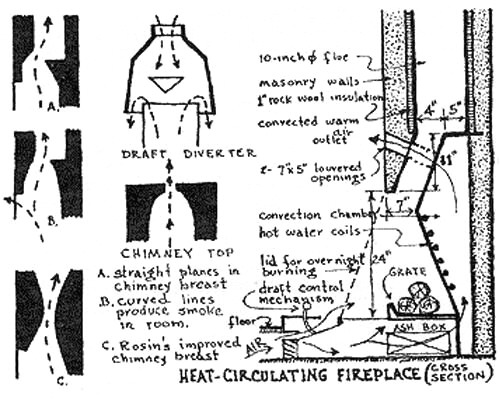
Louis Savot of France invented the raised grate and designed a circulating fireplace in the early 1600s.
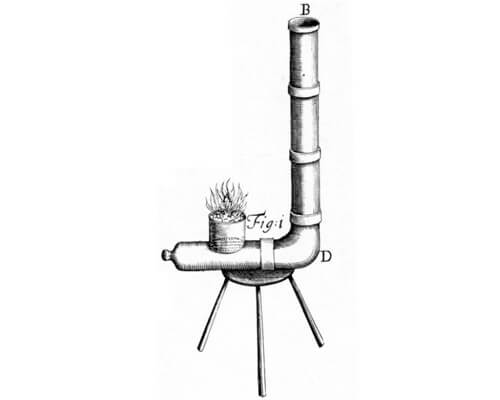
The first freestanding warm-air stove or “smokeless stove” was invented by Dalesme in France in the late 1600s. Dalesme's stove was designed to ensure complete combustion, and therefore, emitted no smoke.
Source: https://donkey32.proboards.com/thread/1919/newbie-introductionYear
1679
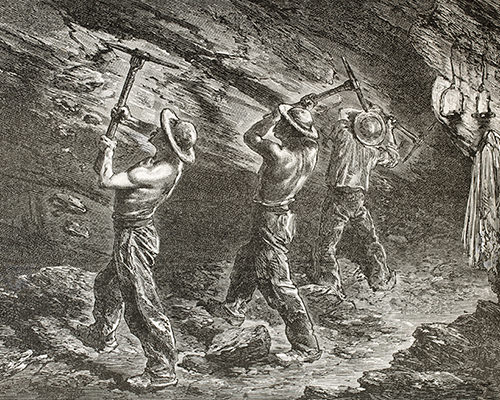
That year was recorded as the year when coal was discovered by French explorers on the Illinois River.
Year
1710
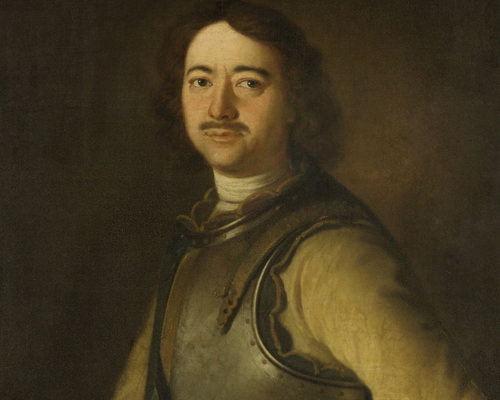
Early hot water systems were used in Russia for central heating of the Summer Palace of Peter the Great in Saint Petersburg.
Year
1741

Benjamin Franklin invented a safe, efficient stove in 1741.
Source: https://en.wikipedia.org/wiki/Franklin_stove#/media/File:Franklin_stove.jpgYear
1745
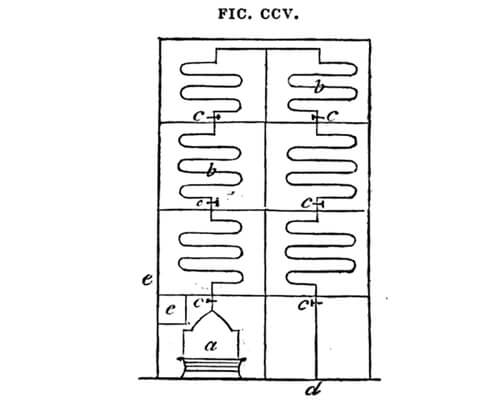
In this year in England, William Cook first proposed the concept of steam heating.
Year
1748
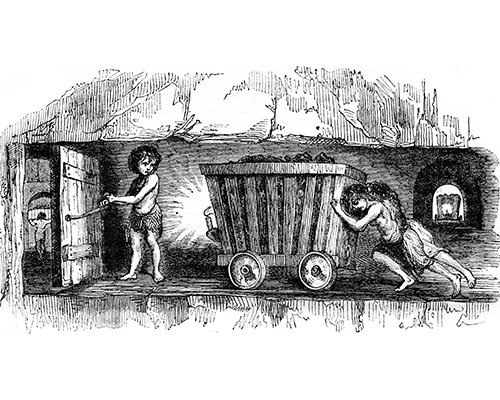
In this year the first recorded commercial coal mining happened near Richmond, Virginia.
Year
1750
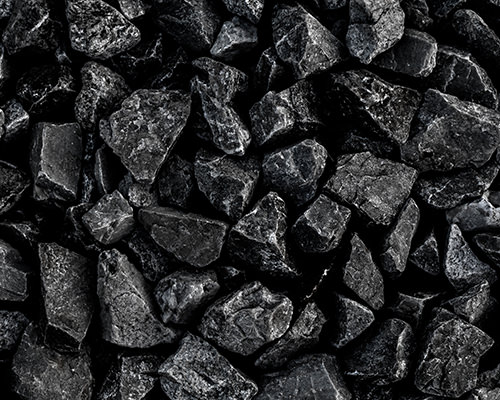
On April 13, 1750, Dr Thomas Walker became the first person to discover and use coal in Kentucky.
Year
1790
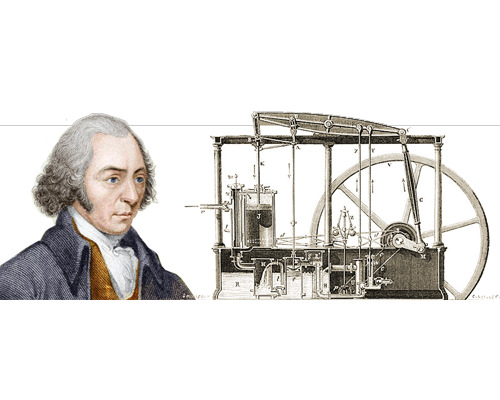
Steam engine pioneers Matthew Boulton, and James Watt used steam heating in their homes with Watt using a crude radiator made of soldered copper sheeting.
In the late 1700s, a Frenchman M. Bonne-main constructed a hot water heating system using a boiler.
Source: https://twitter.com/royalsociety/status/954273508074369024/photo/1Year
1800
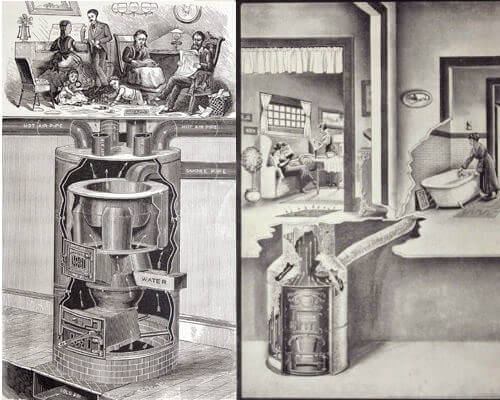
In the early eighteen hundreds, American inventor Daniel Pettibone took inspiration from the hypocaust heating systems of the Romans and invented the first furnace that used warm air for heating. This system was installed at Pennsylvania Hospital in Philadelphia and relied on heat naturally rising and therefore, faced the problem of inconsistent heating.
Source: http://stovehistory.blogspot.com/2015/02/daniel-pettibone-inventor-of-warm-air.html Source: https://archive.org/stream/JohnGrossiusInventorAndManufacturerOfPatentSchoolHouseVentilating/CCA80249#page/n25/mode/2up Source: https://archive.org/stream/HomerPipelessFurnacesWithTheThermo-sealInnerLiningItHeatsIt_78/TheHomerFurnaceCompanyCca51094#page/n11/mode/2up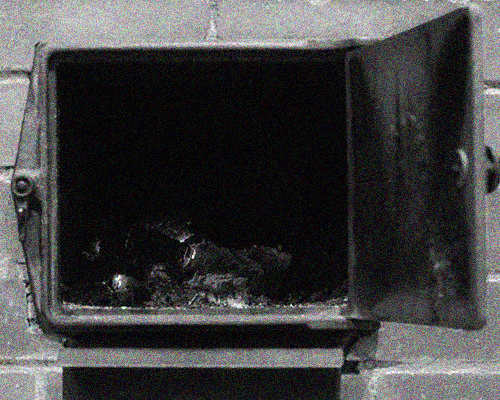
Gas stoves were discovered in the early 19th century, and oil heaters appeared in the 1920s. However, in 1940, 75 per cent of homes still used wood or coal as their primary heating fuel. Early boilers and furnaces were encased in brick, but by 1900, steel-encased furnaces and free-standing cast iron boilers made their way into the market.
Widespread use of heating gave rise to the need to develop efficient control systems. Most of these worked around controlling the source of heat and were complicated to adjust, mostly done manually.

Thomas Tredgold's work Principles of Warming and Ventilating Public Buildings outlined the method of hot steam heating applications to smaller, non-industrial buildings.
Year
1802
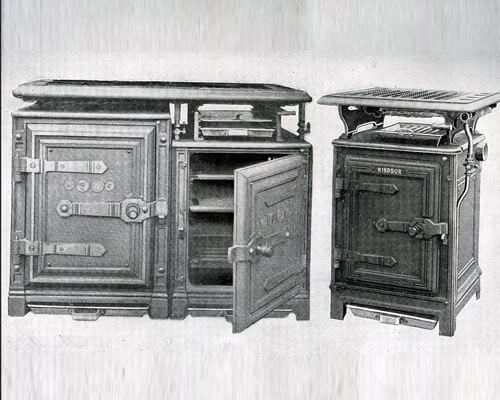
The first gas stove was developed in 1802 by Zachaus Winzler.
Source: https://www.slideshare.net/fernandoro8/ovens-40255392Year
1805
The Industrial Revolution introduced advanced warm-air heating. In England in this year, William Strutt invented a warm-air furnace that was made of a riveted, wrought iron air chamber encased in brick. The brick and the iron was designed in such a way as to allow circulation of hot and cool air, where cool air was warmed to heat the room.
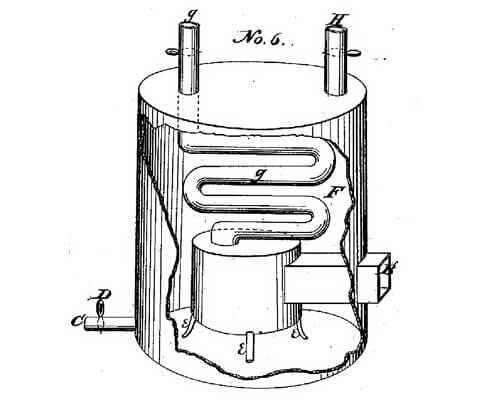
Fire-tube hot air furnaces were also invented in France. These used iron pipes placed at a slight pitch through the brick faces of a fire chamber. Professor Dr Paul Meissner of the Vienna Polytechnical Institute, Vienna, Austria, published a book on heating with hot air in 1821, wherein he explained the laws of warm-air heating. These concepts used a more scientific approach.
Year
1816
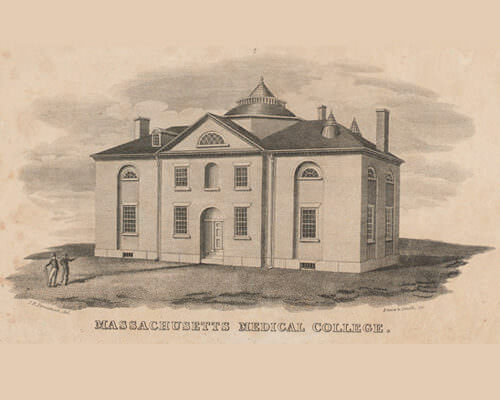
The first U.S. building to be centrally heated was the Massachusetts Medical College this year. This system used a gravity hot-air principles using a basement furnace and ductwork.
In the same year, the French idea of hot water heating was refined and introduced in England by the Marquis de Chabannes.
Source: https://commons.wikimedia.org/wiki/File:Massachusetts_Medical_College_ca1824_MasonSt_Boston.pngYear
1826
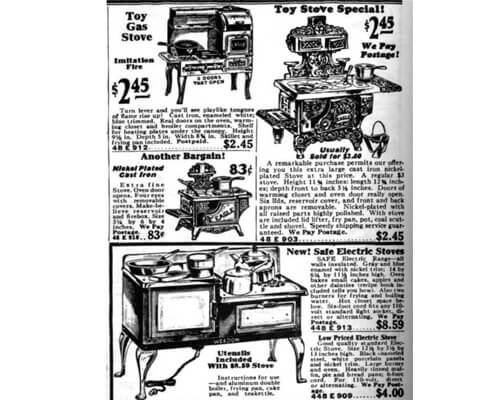
James Sharp patented a gas stove in Northampton, England in 1826. The firm Smith & Philips marketed his invention from 1828.
Year
1830
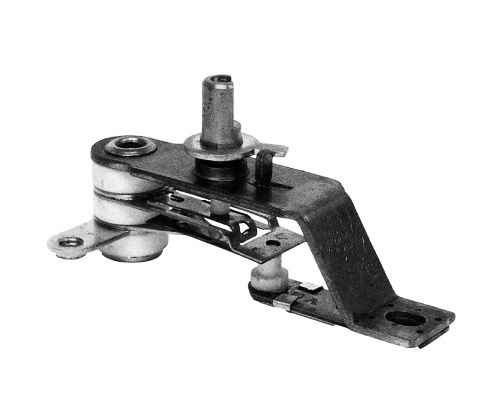
A bimetal thermostat was invented by Andre Ure in England and patented in 1830. In the U.S. also the widespread development and use of central heating encouraged many to invent thermostatic control methods in the late 1800s.
Year
1831

Angier Perkins recognised the drawbacks of bulky heating systems that were prevalent then. In 1831, he designed a high-pressure hot water system using a small-diameter, thick-walled wrought iron pipe which was coiled and placed in a furnace. His system heated the water in the pipe coils then circulated hot water to coils of pipe or baseboard heaters, placed in the rooms to be heated. After a few accidents, Perkins modified his system which remained popular in England until the 1850s.
Source: https://en.wikipedia.org/wiki/Central_heating#/media/File:Perkins_furnace_and_expansion_tube.jpgYear
1837
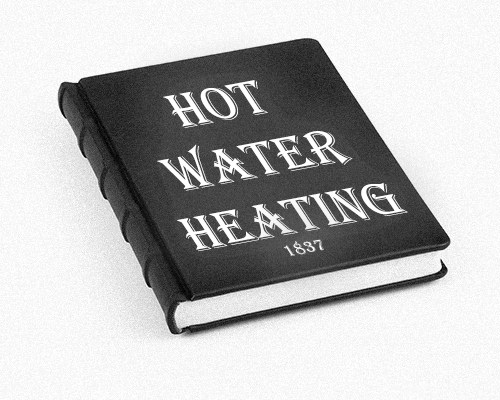
This year, Charles Hood of London wrote the first engineering handbook about hot water heating.
Image for illustration purpose onlyYear
1840
In late 1840, a stove maker from Connecticut, Stephen Gold, experimented with home steam heating systems.
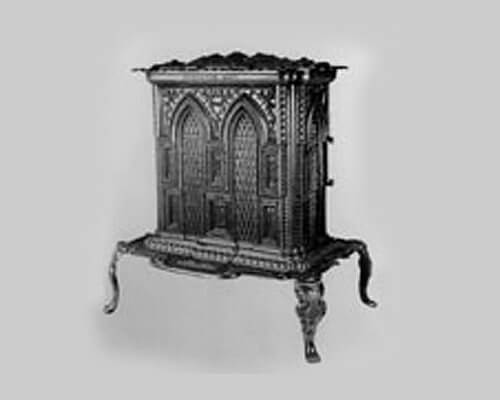
In the U.S., Robert Briggs began to design and install hot water heating systems after 1840.
Source : https://www.achrnews.com/articles/87035-an-early-history-of-comfort-heatingYear
1842
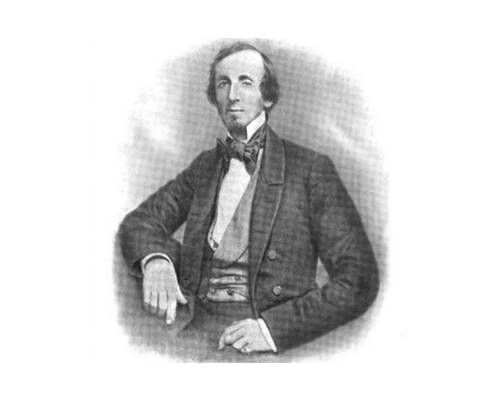
Joseph Nason and James Walworth introduced the Perkins’ high-pressure hot water heating system to the U.S.
Source: https://commons.wikimedia.org/wiki/File:Joseph_Nason.jpgYear
1849
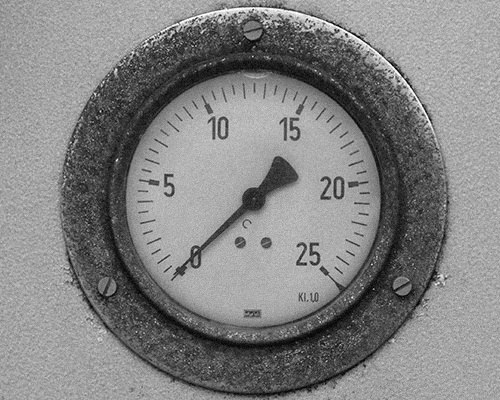
F.P. Oliver invented a stove that incorporated a thermostatic draft control.
Year
1850
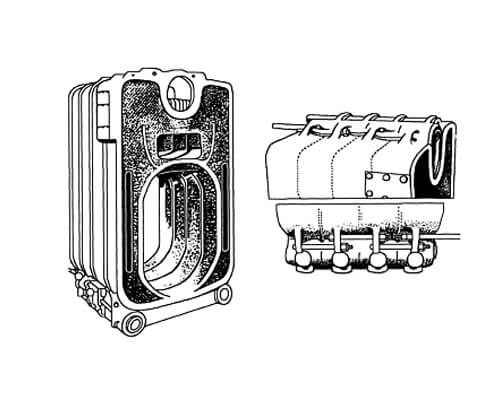
Cast iron boilers with sections appeared around 1850.
Year
1854
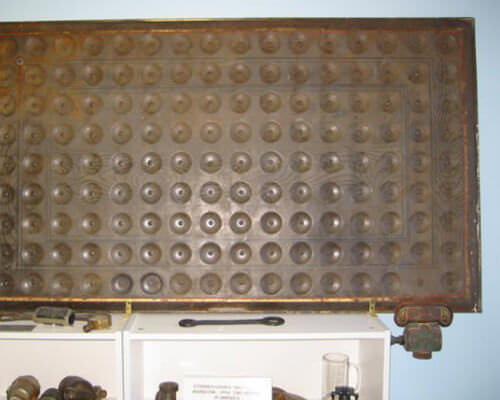
Stephen Gold used the first radiator which was a device made of two dimpled iron sheets that were riveted together at the dimples. The edges were used as a gasket, and due to its look, this radiator became well known as “the mattress radiator.” This mattress radiator was adopted and used for at least 50 years since its invention. In the same year, the design was improved, and after the year 1854, the manufacturing of new radiator was taken over by the Connecticut Steam Heating Company.
By World War 1, many different patented designs of steam heating systems were in use. However, steam heating never really became popular for home heating due to complex workings and safety fears.
Source: https://fr.hudsonreed.com/info/blog/histoire-complete-du-radiateur/Year
1855
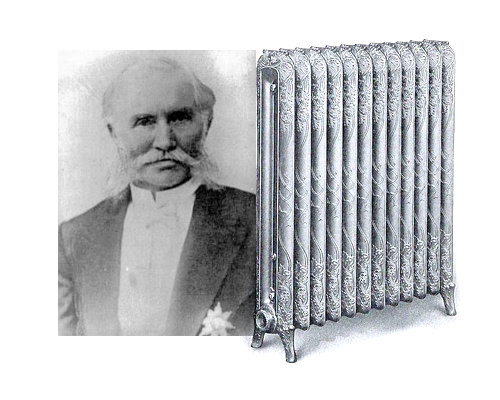
Franz San Galli, a Russian, invented the radiator between 1855 and 1857.
Source: https://en.wikipedia.org/wiki/Franz_San_Galli Source: https://www.classiccomfort.co.uk/brief-history-cast-iron-radiators/Year
1863

Predecessors to the modern day radiators date to the year 1863 when Joseph Nason and Robert Briggs patented a radiator with a new design that used vertical wrought iron tubes screwed into a cast iron base.
Year
1870
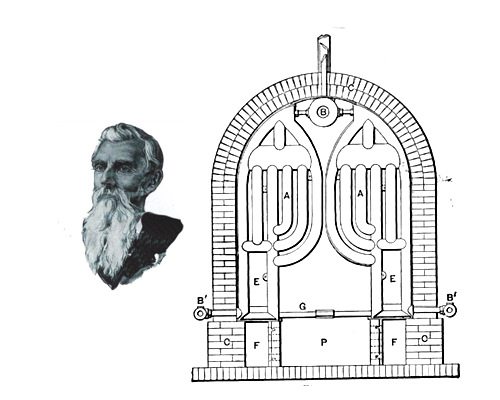
John Mills invented a successful water-tube boiler.
Source: http://www.hevac-heritage.org/built_environment/biographies/surnames_M-R/mills/M1-MILLS.pdfYear
1874
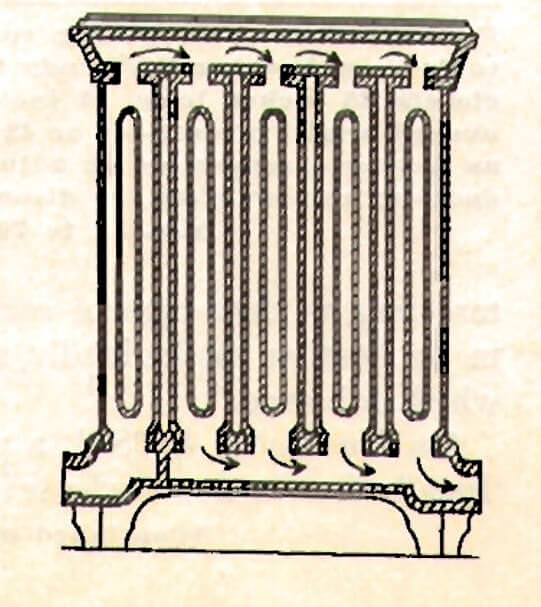
In this year, Nelson Bundy invented the first popular cast iron radiator. By the 1880s, cast iron sectional radiators were widely adopted and used.
Year
1885
This year, coal surpassed wood as the primary fuel in the developed world. Coal carts and trucks would deliver piles of coal to homes which were burnt in furnace-like structures for generating heat in homes.
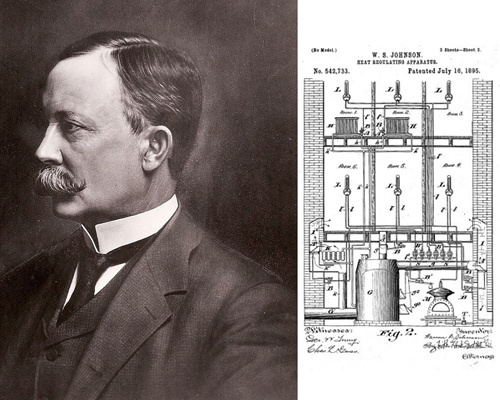
In the same year, Professor Warren Johnson, a Wisconsin school teacher patented a thermostat that used compressed air to operate steam valves.
Source: https://en.wikipedia.org/wiki/Warren_S._Johnson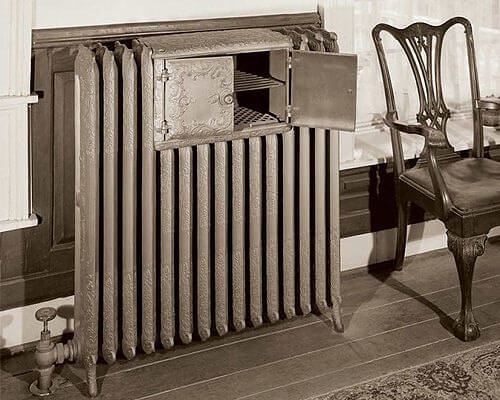
During this time, Franz San Galli, a German invented radiator called the “hot box, ” and this was a revolution in central heating. It was launched in St Petersburg.
Year
1887
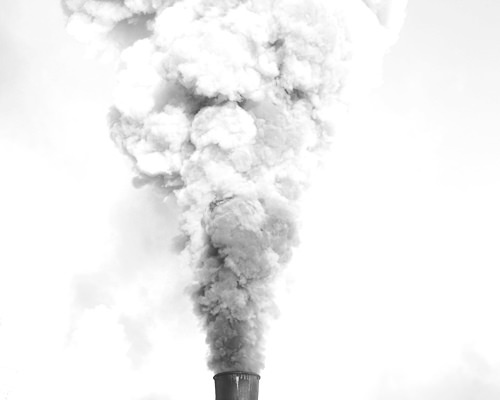
In 1887 William Powers came up with the idea of using vapour pressure to activate a furnace.
Year
1890
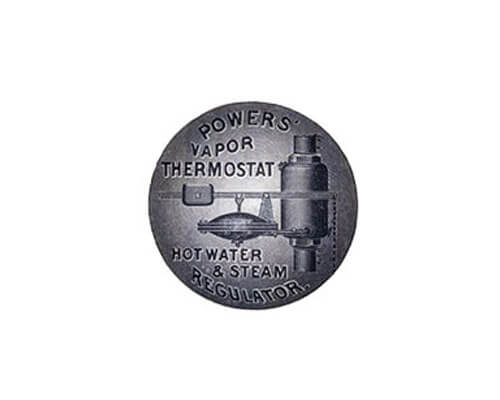
In this year William Powers formed the Powers Regulator Co. in Chicago, IL, to experiment and develop thermostatic controls. The very first Powers thermostats were made of solid brass and measured about 15-in in diameter. Powers heating systems were used in renowned buildings, like the Chrysler and Empire State buildings.
Year
1891
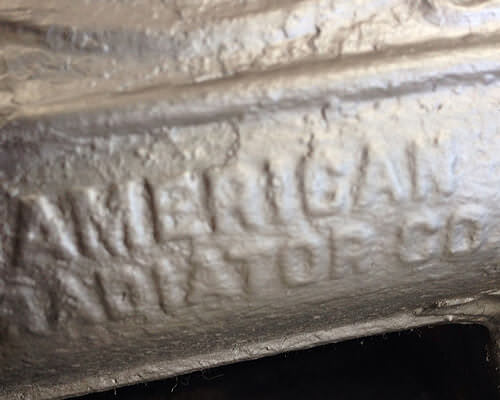
By now, the American Radiator Company consolidated a number of boiler and radiator manufacturers in 1891, becoming exceedingly successful. The company proudly advertised itself as the largest maker of radiators in the world and did indeed manufacture almost all radiators at the time. The company still exists today and is called American Standard.
Source: https://www.wikiwand.com/en/American_Radiator_CompanyIn the same year, the Ohio Gas Light Co. installed gas heating systems in 50 homes as an experiment.
By WW1, electric gas valves had been developed, for easy control using thermostats.
Year
1895

Charles Foster of St. Louis, MO, patented a damper-type heating register.
Year
1905
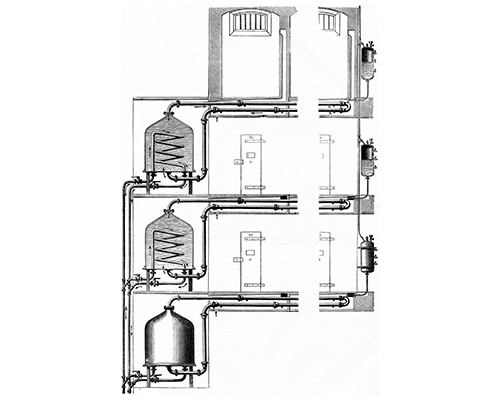
Hot water heating was making inroads into what had been a seemingly secure market making furnace manufacturers nervous. The manufacturers formed the Federal Furnace League in 1905, to protect their interests.
In the same year, Prof Warren Johnson created the humidistat to control the humidity in buildings. The company presently goes by the name Johnson Controls.
Frank Lloyd Wright discovered ondol in the early 1900s and used it when designing buildings. Wright also invents underfloor systems using hot water.
Year
1907
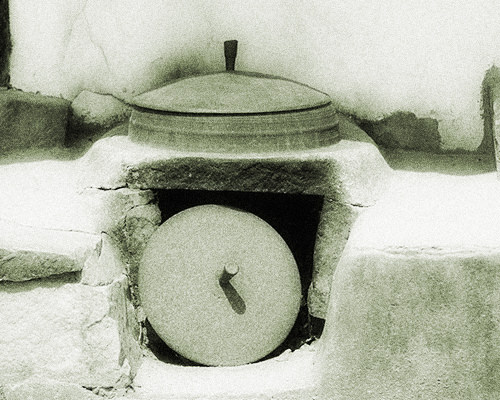
A.M. Byers of America started promoting radiant heating. In Asia use of traditional ondol and kang as fuel continued, combustion gases started being used under floors.
Year
1910

General Electric advertised for a booster fan they manufactured specifically for furnaces to boost air circulation.
Year
1914
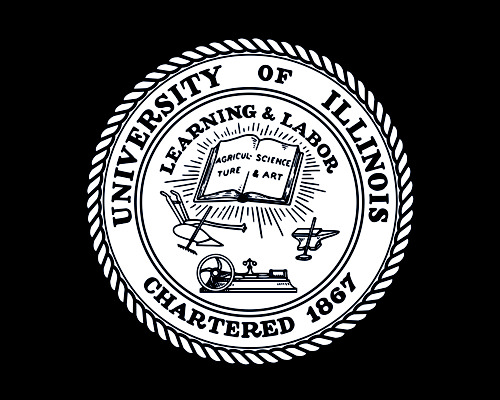
The National Warm Air Heating and Ventilating Association was set up in the US. Test and research programs were conducted at the University of Illinois.
Year
1925
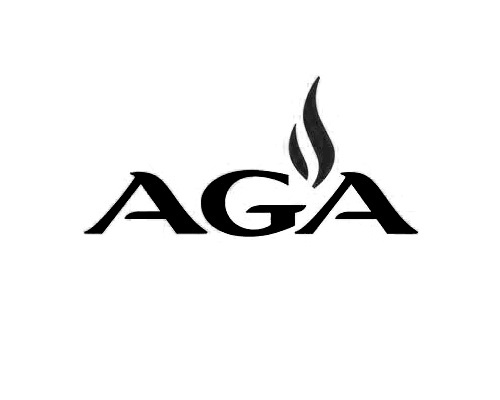
The A.G.A. Testing Laboratory for gas-fired testing systems was set up in Cleveland, OH, by the American Gas Association.
Early insulation attempts used materials like corn husk, sawdust, and pine cones, ground newspapers treated with fire retardant, etc. but these attracted rodents, and soon the idea had to be given up.
Year
1930
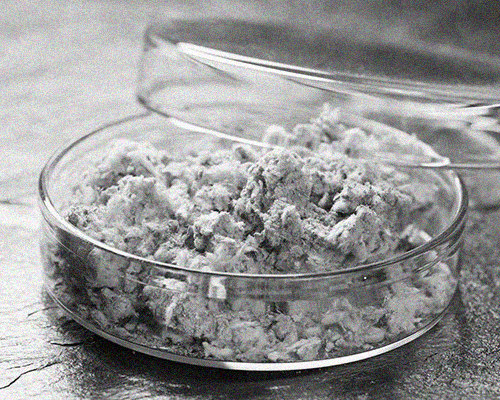
In the early 1930s engineers found a way to take compact strands of tiny glass fibres, melt them, spin them like cotton candy and create fibreglass insulation which is an important element in heating systems. Another material was used at this time as insulation, and it was called “Asbestos.” This mineral is made up of microscopic fire-retardant fibres that effectively holds heat.
Year
1937
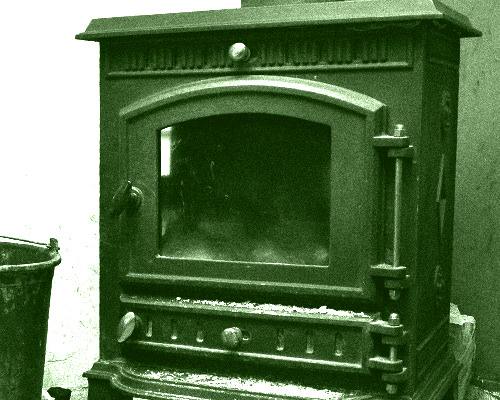
The first U.S. furnace manufacturer, Richardson & Boynton Co., began mass marketing of furnaces.
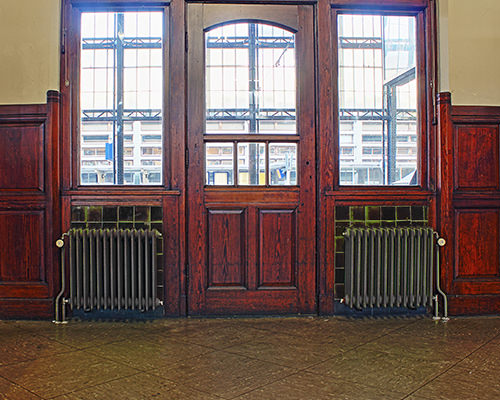
It was the Victorian period where the familiar cast iron radiators were introduced with heating appliances becoming not only functional but aesthetic items as well. Even in the year, 1970, very few homes had central heating. Eventually, steel and aluminium radiators became popular in Europe.
After World War II, most places globally experienced rapid growth in terms of development and distribution of electricity. Alongside conventional heating systems, electric heating systems made their way into homes and businesses. Progress in material technology meant that heaters could now be made from plastic too and were as good as those made from metal. Appliances have shrunk in size, become streamlined and lighter in weight. Besides, designers can now experiment easily with the aesthetic aspects, making these appliances stylish and trendy.

Environmental considerations and safety standards have become an important and integral part of the development of newer radiators and heating systems. Recycling has become essential so that materials may be reused.
Frank Lloyd Wright designs the first radiant heated home.
Year
1939
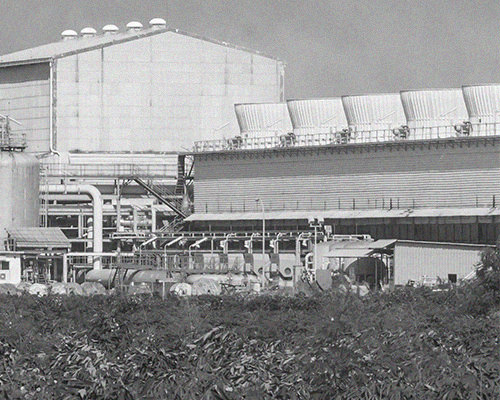
America sets-up the first polyethylene plant.
Image for Illustration Purpose Only.Year
1945
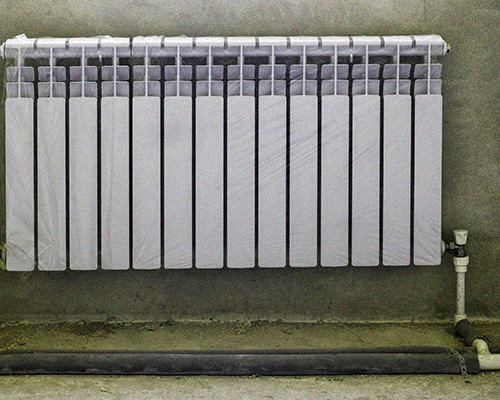
In 1945, water based radiant heating used in thousands of homes in America.
Year
1951
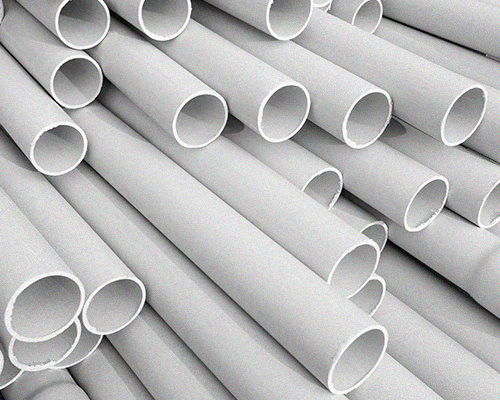
Dr. J. Bjorksten tests plastic pipes for radiant floor heating in America. These plastics were PE, PVC and vinylidene chloride.
Year
1960
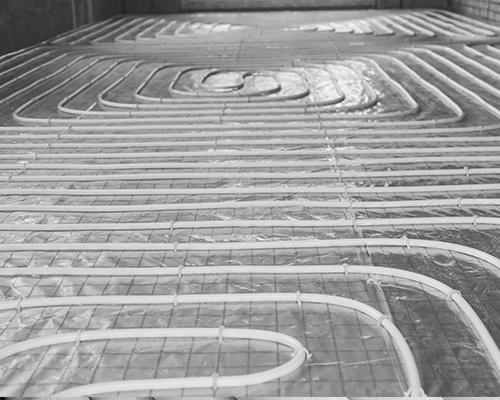
A Canadian NRC researcher installs underfloor heating in his home that used hot water radiant heating system using an automatic anthracite furnace.
Year
1970
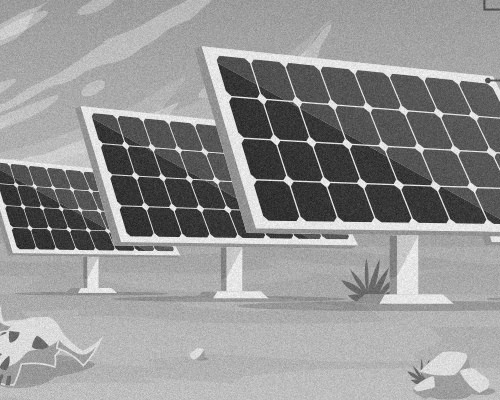
In the 1970’s electric air-to-air heat pump and solar energy began became widely adopted.
Year
1995

Unfloor Heating Standards are laid down in Europe. All residential buildings in Korea see use of water-based ondol systems. Floor heating sees widespread use as a traditional heating system in residential buildings in Europe and Nordic countries. This period see the application of floor cooling and thermal active building systems in both residential and commercial buildings.
Year
2000
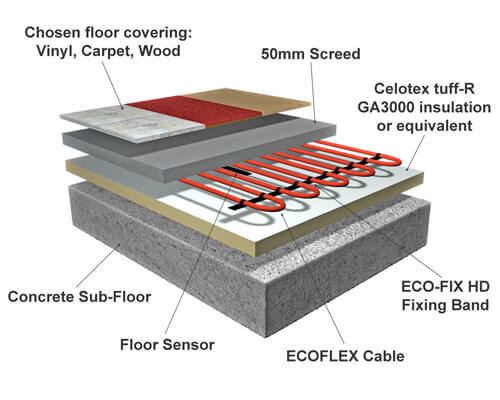
The use of radiant based HVAC systems became widely used all over the world.
It was the Victorian period where the familiar cast iron radiators were introduced with heating appliances becoming not only functional but aesthetic items as well. Even in the year, 1970, very few homes had central heating. Through the years, natural gas, coal and radiant heating continued to be used as a heating source. Eventually, steel and aluminium radiators became popular in Europe.